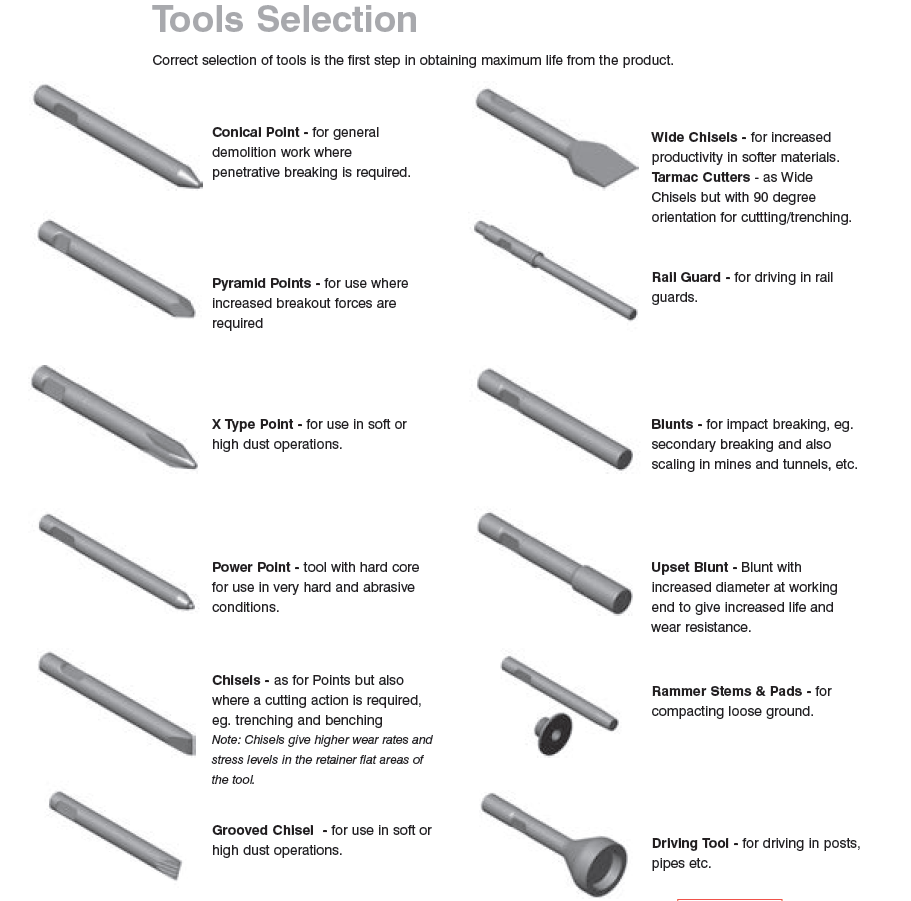Power Tools Supplies provide top quality products from top manufactures. Their manufacturing experience on Demolition Tools covers a period of over thirty years, throughout which they have continued to develop high quality tools for an ever-demanding marketplace.
All tools are manufactured and processed within an modern factory, utilising the very latest machinery and technology, which ensures that our finished products comply with the high standards of quality expected by their customers worldwide. They operate a Quality Management System which is certified to BS EN ISO9001:2008 standard.
To download full catalogue please click here

Care & use
Working Angle
Critical to tool life is using the tool at the correct working angle of 90° to the working surface. Failure to do this will result in high contact pressure between the tool and the bushings and the likelihood of galling between the surfaces. In turn this can lead to premature failure of the tool plus damage and rapid wear to the bushings. Worn bushings can allow the tool to be angled over to a position where the striking face is hit at an angle by the piston.
Lubrication
Lubrication of the tool/bushing with the correct quality high temperature/high pressure grease at regular intervals is essential. Such greases are best able to cope with the extreme contact pressures generated by an incorrect working angle, leverage and excessive bending etc.
USE OF CHEAP SUBSTITUTES (OR NO GREASE AT ALL) IS FALSE ECONOMY AND WILL RESULT IN PREMATURE TOOL FAILURE.
Blank Firing
Continuing to use the hammer when the tool is not or only partially in contact with the work surface will result in the tool being fired down on to the retainer pin. This will cause heavy wear and damage to the upper retainer flat radius area and the retaining pin itself.
Tools should be examined regularly, eg. every 40 hours for damage in this area which should then be ground out.
At the same time as the tool is examined the opportunity should be taken to check the tool bushings for wear and damage with a view to replacement or reconditioning as necessary.
Overheating
Avoid continuous working in one position. Do not strike in one spot for more than 10 - 15 seconds before changing the tool to another position. Failure to do this can lead to excessive heat build-up at the working end with ‘mushrooming’ as a consequence.
Leverage/Bending
Using the tool as a lever to help break the ground is a common tool breaker. Avoid leverage and excessive bending at all times.
Loose running Keep the boom and hammer feed sufficient to ensure that the tool is held against the hammer shoulder stop, at all times when working.

